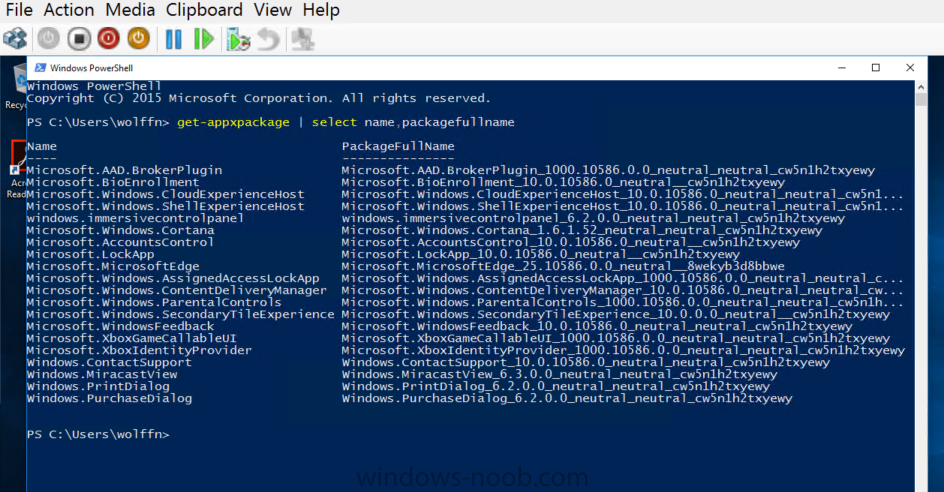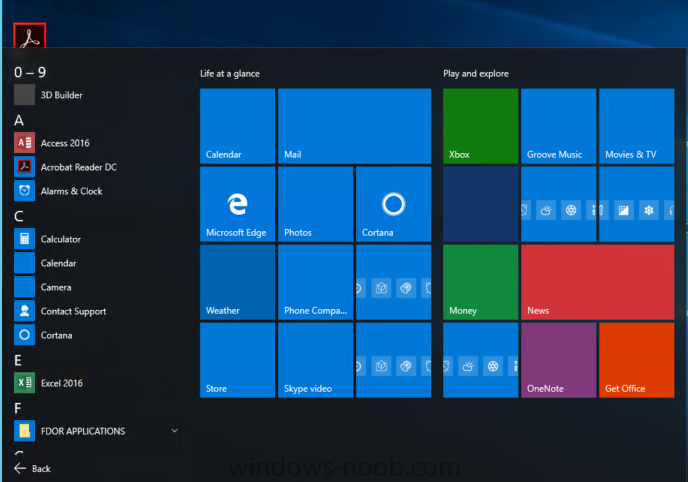
noahw86
Established Members-
Posts
16 -
Joined
-
Last visited
noahw86's Achievements
Newbie (1/14)
0
Reputation
-
I was able to solve it by changing the "C:\Drivers" location to "C:\_SMSTaskSequence\Packages\" I watched the upgrade process via the SMSTS.log and saw it was downloading the drivers and claiming it was putting them in the specified folder "C:\Drivers", but it wasn't actually populating that directory. So I went and moved it to the other location, and it worked.
-
i'm having the same issue with variable names, and driver references. my TS keeps failing right after this command is executed: Executing command line: "C:\_SMSTaskSequence\Packages\XXX123AB\SETUP.EXE" /ImageIndex 1 /auto Upgrade /quiet /noreboot /postoobe "C:\WINDOWS\SMSTSPostUpgrade\SetupComplete.cmd" /postrollback "C:\WINDOWS\SMSTSPostUpgrade\SetupRollback.cmd" /installdrivers "C:\Drivers\XXX123AB" /DynamicUpdate Enable OSDUpgradeWindows Some thing I noticed. So I’m sending the drivers to C:\Drivers\<package name>, but they never make it there, ever. I kept a Windows Explorer window open during the entire process this last run, and the folder never populated with anything. This is when the TS seems to be failing also. Yet the SMSTS.log log says: Driver package source is located at 'C:\Drivers\XXX123AB' OSDUpgradeWindows And then later tries to execute: Executing command line: "C:\_SMSTaskSequence\Packages\XXX00425\SETUP.EXE" /ImageIndex 1 /auto Upgrade /quiet /noreboot /postoobe "C:\WINDOWS\SMSTSPostUpgrade\SetupComplete.cmd" /postrollback "C:\WINDOWS\SMSTSPostUpgrade\SetupRollback.cmd" /installdrivers "C:\Drivers\XXX123AB" /DynamicUpdate Enable OSDUpgradeWindows
-
I'm trying to find a solution for Application Approvals that are done by a standard user from within the Application Catalog that will restrict them to the specific device the request was submitted from. Within the table application request table, there's a machine ID that can be used, but I don't quite know what to do to implement it since the request is executed on the user's local end, and with little to no permissions (to read the SQL table) any suggestions? has this been done somewhere else before that I missed? I've looked around on here and done some Google searching, but haven't found anything. thanks FYI - I've found this, https://social.technet.microsoft.com/Forums/en-US/7097f604-8cd6-4a36-898b-b9335b690d5b/sccm-application-catalogue-lock-users-to-only-install-once-per-approval?forum=configmanagerapps but I've noticed that a user can be a "primary user" on many different devices
-
is there a way to actually know what constitutes as "data usage"? i have an app called Desktopinfo http://www.glenn.delahoy.com/software/ , that simply is just to report local device info on the desktop, and it sometimes will show a large amount of data within "data usage", sometimes from 1-3GB within <=30day period. thank you
-
noahw86 started following Integrated Data Usage counter
-
FYI for those looking for a taskbar mod usable during OSD: http://ccmexec.com/2015/12/customizing-the-taskbar-in-windows-10-during-osd/ As far as this startmenu mod, it doesn't work unless you: a.) do not use copyprofile and b.) remove this line (highlighted in screenshot) from your export produced XML
-
Custom Start Menu & Metro App removal
noahw86 replied to noahw86's question in Deploying Windows 10, Windows 8.1, Windows 7 and more...
What's the best way of doing this? I've created so many new XML files with the export cmdlet and attempted to implement them into my OSD TS in SCCM and it still doesn't work at all. I'm not getting my predefined layout in my profile when i log onto my VM with the freshly imaged computer. -
Custom Start Menu & Metro App removal
noahw86 replied to noahw86's question in Deploying Windows 10, Windows 8.1, Windows 7 and more...
i just learned why i was getting the error i was getting about invalid file type, i was trying to run it on win 10 version 10240 i was trying to apply it to a WIM though that i mounted. it still causes weird stuff like shown above in the screenshots during the OSD, on 1511 -
Custom Start Menu & Metro App removal
noahw86 replied to noahw86's question in Deploying Windows 10, Windows 8.1, Windows 7 and more...
Hey, thanks for the response! Unfortunately, I've already tried creating a new one (using the commands below) on a VM and then using that same created file, it still doesn't work :\ Export-StartLayout C:\Temp\layoutmodification.xml and i also read that import needs .bin files so i have also tried Export-StartLayout C:\Temp\layoutmodification.bin -
Custom Start Menu & Metro App removal
noahw86 replied to noahw86's question in Deploying Windows 10, Windows 8.1, Windows 7 and more...
-
Custom Start Menu & Metro App removal
noahw86 replied to noahw86's question in Deploying Windows 10, Windows 8.1, Windows 7 and more...
-
I used to have the scripts that are listed all over the web within my Win10 deployment and it worked wonderfully. But now, it's not. And i'm not sure why. What's happening is, the metro apps are being removed, but their shortcuts i guess are staying behind. And as for the start menu, the file is being applied to the default profile and i can open the layoutmodification.xml file in the current user location and the default user location and the contents of it match the desirable xml file on the SCCM server that's being deployed, but the start menu still looks original to a fresh Win10 install, but it also has messed up metro app shortcuts that are left behind from the apps that were removed. Why is this? I've included a screen shot of what it looks like now.
-
should I not be using copyprofile in my unattend for win 8.1 or win 10? I've got it in both and it doesn't seem to work. I set a wallpaper up in my base image prior to sysprep manually (sysprep /generalize /oobe /shutdown /unattend:<network share unattend file here>) and everything seems to work but the stupid wallpaper doesn't work when the image is finished deploying via SCCM and a user logs on, it's just the default win 8.1 wallpaper
-
I had experienced this the first time I tried making a win10 image. which version of config manager is your environment running on? have you found a solution to this? the way I got around that, was when I didn't use the capture media and I did the sysprep manually myself and then the DISM manually myself.
-
I'm on Config Manager 1511, and when I try to use the newly created capture media, it syspreps (which, I wish I knew exactly what it was doing, like what command it was using with what parameters) and then reboots and begins capturing but I noticed it's capture "2 of 2" volumes, because on the VM, when I installed the base OS with the regular ISO file, it creates multiple partitions. Is this multiple volumes going to be a problem later? I know when I did it normally, I ended up with just 1 volume, or, "index". The method I used to get just one volume is sysprep manually and DISM manually.





